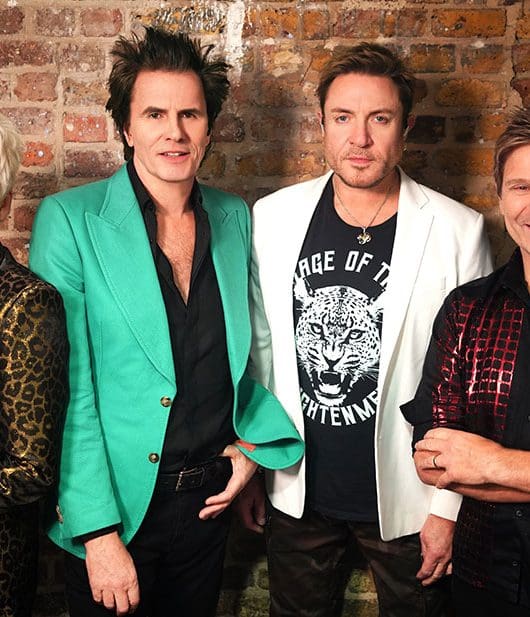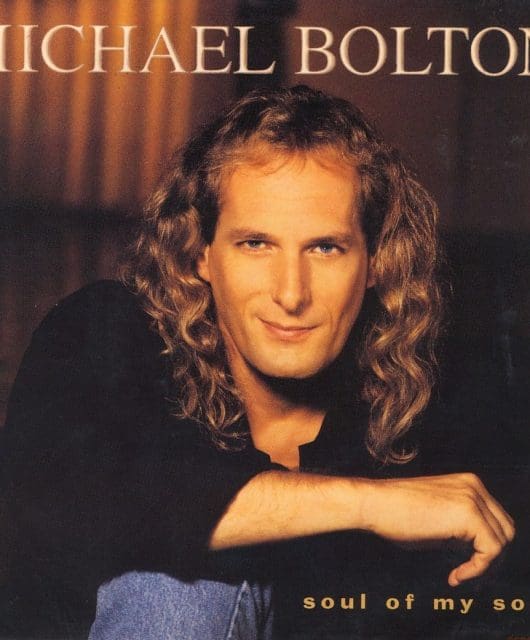Making Duran Duran: Duran Duran
By Steve Harnell | July 5, 2021
Before the silk suits, yachts and blockbuster videos sailed into view, Duran Duran’s debut album saw them at their most experimental – an innate pop sensibility melded with art-school synths, punk angst and dancefloor-friendly grooves…

Like so many of Britain’s biggest bands, a spirit of experimentalism borne out of art-school beginnings planted a fire in the bellies of Duran Duran.
When schoolboy friends Nick Rhodes (then Nicholas Bates) and John Taylor (previously the rather less rockist-named Nigel Taylor) formed Duran Duran with collegemate Stephen Duffy, it was with a mission statement to fuse the rock energy of the Sex Pistols with the discofied style of Chic – although at the height of the ‘disco sucks’ movement, the band’s love of Nile Rodgers and Bernard Edwards’ work was decidedly unfashionable.
However, throwing the studied synth-pop dynamics of Japan and the art-rock ambitiousness of Berlin-era Bowie into the stew, the band reckoned they had hit upon a ready-made formula for success.
Duran Duran played their first show at Birmingham Poly on 5 April 1979 – a 30-minute set to just 20 people. A later support slot to fellow Birmingham band Fashion at the Barbarella’s venue attracted a certain Roger Taylor to the audience.
“I just thought this band could be the next big thing out of Birmingham. I don’t know why I had that feeling,” the drummer explained.
As the resident band of Birmingham’s Rum Runner club, Duran were perfectly placed to immerse themselves in the myriad influences of the burgeoning New Romantic movement. Key to their learning curve was the influence of the Berrow brothers, who managed the band in their early years and also ran the Rum Runner.
“My brother and I were importing all the new Giorgio Moroder-style records from New York,” Paul Berrow explained to The Guardian. “We’d been to Studio 54 and heard how dance music was changing. The Duran aesthetic was influenced by that.”
The band’s close association with the Rum Runner – John Taylor worked the door and Nick Rhodes DJ’d – meant they could use it as a rehearsal space and quickly refine their act. Duran also paid close attention to the club’s regular jazz-funk night, mining its sounds for inspiration.
When Stephen Duffy left the band (John Taylor originally played guitar with Simon Colley taking on bass duties), Andy Wickett replaced him as lead vocalist. Wickett, who worked nights at Cadbury’s Birmingham factory while in Duran, contributed to writing Girls On Film, although he is not credited on the final studio version.
His vocals were also found on demos presented to EMI before the band were signed that were recorded at Bob Lamb’s studio in Cambridge Road, Birmingham; the first two albums were almost entirely demoed initially in Lamb’s studio.
Duran Duran: Making Seven And The Ragged Tiger
Duran Duran: Making Rio
More changes were to take place before Duran Duran eventually settled on their most famous original five-piece line-up, including the arrival of Roger Taylor to take over from Nick Rhodes’ rudimentary drum machine. With Colley and Wickett’s exit from the band, Jeff Thomas was installed as frontman alongside a guitarist from West London’s punk scene, Alan Curtis.
During Duran’s early days, Birmingham felt like a breeding ground for new talent. Local outfit The Beat had already made it on to Top Of The Pops, and Dexys Midnight Runners rehearsed within earshot of Duran at a rat-infested disused casino in an alley that went down to the Rum Runner.
In the Duran Duran Rewound: Untold Stories documentary, Nick Rhodes explains: “There was a real vibe in the town at the time and so many music venues. I particularly liked Rebecca’s and Barbarella’s over the road from the Rum Runner.” At the latter Nick saw Blondie, Talking Heads, Television, Generation X, Johnny Thunders and the Heartbreakers, and more.
Also rehearsing nearby was reggae band UB40. Roger Taylor remembers: “We were like in a parallel universe to UB40. We were obviously from the same city and started around the same time. They actually used to rehearse next door to us at the Rum Runner in one of the old rooms there. We used to share amps and speakers, all sorts. They were in one room singing about being on the dole and how miserable it was in Birmingham, and we were in the other room singing about Girls On Film and Rio – completely different subject matter.
“We had this aspirational view of the world and theirs was very earthy and about Birmingham and where they were from. We were so close in some ways but so different in others.”
It was the Rum Runner’s diversity that proved to be its trump card in the eyes of Duran – a relaxed dress code that would see jeans and trainers one night, then feathers and massive shoulder pads two nights later.
“The Rum Runner was at the centre of all Duran Duran activity,” explained Rhodes. “We used to hang out with [Birmingham fashion designers] Patti Belle and Jane Kahn. That club really was wild, but in a beautiful way. It was just people at the end of the week going out and dressing up and doing what they wanted to do.
“In contrast, the Blitz club was what was going on in London, and we thought that theirs would be trumping ours somehow. We all went to the Blitz club one night and I have to say it was really pretty dull because everything was much more uptight. It didn’t feel real and didn’t have that spirit. What we have in Birmingham is that incredible spirit.”
The initial search for a frontman led the band through several vocalists but with the arrival of Simon Le Bon in May 1980, poetry book in hand for an awe-inspiring audition, the band began to make rapid strides. A month earlier, guitarist Andy Taylor had successfully auditioned for the group after answering an advert in the Melody Maker.
Le Bon played his first gig a month after joining, before the band secured a high-profile support slot on a Hazel O’Connor autumn and winter tour that stretched throughout November and December.
Duran began to generate feverish interest among record labels including majors Phonogram and EMI, and it was the latter’s Dave Ambrose who secured their signatures. Ambrose was the man who signed the Sex Pistols for a blink-and-you’ll-miss-it union, and also established a much more successful and longstanding relationship with Kate Bush.
Duran maintained that their decision to join EMI was partly out of patriotism and a mutual admiration for The Beatles.
Duran’s eponymous debut album was officially demoed at AIR Studios in 1980; at the exact same time, key influence Japan were recording their seminal Gentleman Prefer Polaroids down the hall. Final recordings took place at a variety of studios including Red Bus and Utopia as well as in Chipping Norton.
Read more: Duran Duran Superfan
Duran Duran: Making The Wedding Album
Producer Colin Thurston, chosen for his work with David Bowie, Iggy Pop and the Human League, was impressed by the band’s demos – within a single listen to first track Girls On Film he realised he had a special band on his hands. However, the hallowed surroundings of EMI’s Abbey Road studios proved to be no advantage, as Thurston struggled to master its technology.
In an interview with Home Sound Recording in 1985, Thurston explained: “‘We went to Abbey Road, spent nine hours trying to get a drum sound and then cancelled the month I had booked there. Then we went to Red Bus studios and got the drum sound we wanted in 15 minutes. In two weeks, we had the whole album done apart from the vocals. I think I was so in awe [of Abbey Road] because it was the Beatles’ studio, I just stood there with my mouth open! I couldn’t get anything to work.”
After that, sessions for the album went smoothly – although when news filtered through to the band of the murder of John Lennon on 8 December 1980, they struggled to maintain focus for the remaining duration of recording that day.
Upon its release on 15 June 1981, Duran Duran was an immediate success, rising quickly to No.3 in the UK charts and staying in the Top 100 for 118 weeks. By December the following year it had achieved platinum status, its sales helped by the band’s increased profile thanks to Rio.
The US were at first slow to catch on to the Duran Duran phenomenon, although the debut LP was later re-released in the slipstream of Rio.
By the end of 1981, however, the band were keen to distance themselves from the New Romantic tag and establish their own individual identity.
In a European TV interview, Simon Le Bon explained: “It’s obvious as soon as people come to see us or buy the record and find out what we’re actually doing. If they do know anything about the [New Romantic] movement they can disassociate us immediately because we’ve got so many differences. We like to play live and get in front of the people – we try to reach them rather than just sell them records. And then there’s the fashion thing. We’re not particularly theatrical-looking, are we?”
John Taylor was equally determined to set the record straight: “That [New Romantic] label came in because the press wanted to find a way to box away a selection of bands. It didn’t have a lot to do with the music, it was more looking at photographs of bands.
“We were a New Romantic band before anybody had actually heard us. They just took one look at us and seemed to think that we’d fit into that category. But I think the bands that were in that box about 12 months ago have started to grow away from each other. Duran Duran is not just a New Romantic band any longer… they’re a band to themselves, likewise Spandau Ballet and Ultravox.”
The Songs
GIRLS ON FILM
Clicking shutters immediately establish Duran’s links to the world of high fashion, but this is more about industry exploitation than a celebration of its glamour. Dating back to the band’s earliest days, a pre-Le Bon demo featuring Andy Wickett on vocals reveals a spiky post-punk Duran. While the essence of the chorus remains in the final version, by the time Le Bon gets hold of it, the song is transformed into a propulsive groove (John Taylor, as ever, is superb) and lyrics for the verses are totally rewritten. Andy Taylor’s choppy guitars add nuance, but this is a freshly polished Duran done up to the nines. The Top 5 beckoned.
PLANET EARTH
The band’s debut single was an immediate success, grazing the UK’s Top 10 and announcing the arrival of a major new player in the pop world. John Taylor’s rolling bassline and Roger Taylor’s insistent drumming drive the groove, sitting perfectly atop Nick Rhodes’ keyboard washes, while an instantly memorable chorus showcased Duran’s already refined way with hooks, and an understated mid-section bass solo highlights the band’s realisation of John Taylor’s prowess as an instrumentalist.
Planet Earth also has another claim to fame: it’s said to be the first song to explicitly acknowledge the pop cultural scene at which Duran now found themselves at the forefront in the lyrics: “Like some New Romantic looking for the TV sound”. Fans should check out the Manchester Square demo online for evidence of an extra unused verse in the finished studio version.
ANYONE OUT THERE
A concise amalgam of their formative influences (Roxy Music, Japan and, of course, Chic), this song was given its debut performance at Duran’s inaugural Birmingham show. For such an ebullient band oft-overflowing with confidence, Anyone Out There is a rare chink in the armour. It’s a tale of lost love: “I tried to phone last night but you never answered/ Just left me ringing on the line”.
John Taylor adds aggression with his slap bass parts, while Roger Taylor powers the song along with some insistent hi-hat playing. Even on this debut album, there’s nuance amongst the grandstanding; Duran were serious songwriters. Nile Rodgers was such a fan, he nominated it as one of his all-time favourite Duran tracks.
TO THE SHORE
Nick Rhodes’ wonderful, crepuscular synth intro sets the atmosphere here on another track evoking Bowie’s late-70s period. Le Bon’s lyrics are at their most obtuse on a defiantly experimental cut: “The dry fight and dusty shout see you crawling on the floor/ And diamond star shining glitter bright, gorging your sanhedralites”.
Rhodes would go on to recycle a four-note underpinning melody for the outro to Save A Prayer on second album Rio. To The Shore is a glacial, introspective partner to Duran’s typically positivity-filled melodic songcraft. The group’s affinity for art-pop coursed through their veins just as strongly as their more straight-ahead chart-friendly instincts.
Read our feature on Duran Duran’s cover art
Read our feature on Duran Duran’s 1990 album Liberty
CARELESS MEMORIES
When EMI rejected the band’s wishes to release Girls On Film as the follow-up to Planet Earth, the plan backfired. Lacking the instant hookiness of those two tracks, Careless Memories temporarily derailed Duran’s apparently unstoppable momentum, stalling at just No.37 in the UK charts.
There’s a pent-up angst to the track that fizzes along but its chorus lacks the killer punch of Duran’s best early work. Riding on the coattails of the wiry post-punk of The Cure’s Boys Don’t Cry, it doesn’t play to their strengths. Duran rectified EMI’s error by getting their way with Girls On Film as their third single.
NIGHT BOAT
Once again, it’s Nick Rhodes who creates the initial ambience. A brooding sci-fi synth intro – with the occasional feel of Kraftwerk – feeds into a combined groove of bass, ticking drums and some crashing chordal work from Andy Taylor; an accomplished mélange of synthetic and organic.
Originally penned by Le Bon when he was waiting for a night bus, its title and lyrics were rewritten to give the track a more sophisticated feel. The rhythm section of John and Roger Taylor contribute to one of Duran’s darkest tracks.
SOUND OF THUNDER
You don’t often associate Duran with the concept of debilitating cold war paranoia, but following the darkness of Night Boat comes further introspection. Sound Of Thunder was created on the first night Le Bon joined the band when they set his poem about a man who creates World War III to music.
Once more, Simon’s illusive lyrics are open to multiple interpretations: “I’m the man who stepped off the path/ And I just lie here/ The world spins so fast that I might fly off”. Is Le Bon expressing how disconnected he feels from a world free of logic, unpredictable and out of control?
FRIENDS OF MINE
An aggressive, slashing groove that wouldn’t be out of place on Bowie’s Station To Station. Once again John and Roger supply real grit, ably abetted by superb crunching guitar from Andy Taylor. The lyric “Georgie Davis is coming out” refers to the wrongful conviction in March 1975 of George Davis for an armed payroll robbery at the London Electricity Board in Ilford, Essex.
A public campaign for his release even included digging up the pitch at Headingly’s cricket ground, preventing play in a Test match between England and Australia. Although calls for his release was successful, he was later convicted of two other armed robberies.
TEL AVIV
The swirlingly exotic instrumental that closes Duran Duran originally had lyrics and was titled On My Own In Tel Aviv, one of many songs worked up from Le Bon’s book of poems. Nick Rhodes has later elaborated the only thing remaining from that initial incarnation in the finished album track is its title.
Recorded at AIR Studios in London, its striking string section was conducted by Richard Myhill – and the first time an orchestra was employed on a Duran track. Myhill would also contribute string arrangements on the single of My Own Way as well as the Night Version and instrumental Night Version Companion.
For more info on Duran Duran check out their official website here
Read John Taylor’s interview with Duran Duran guitarist Dom Brown





